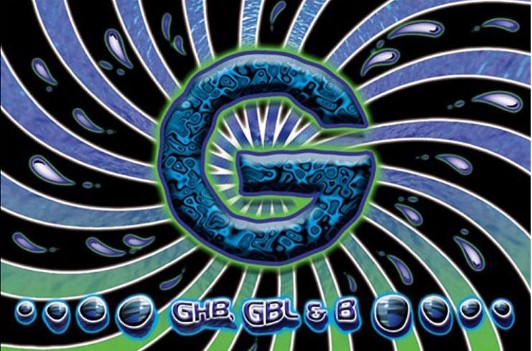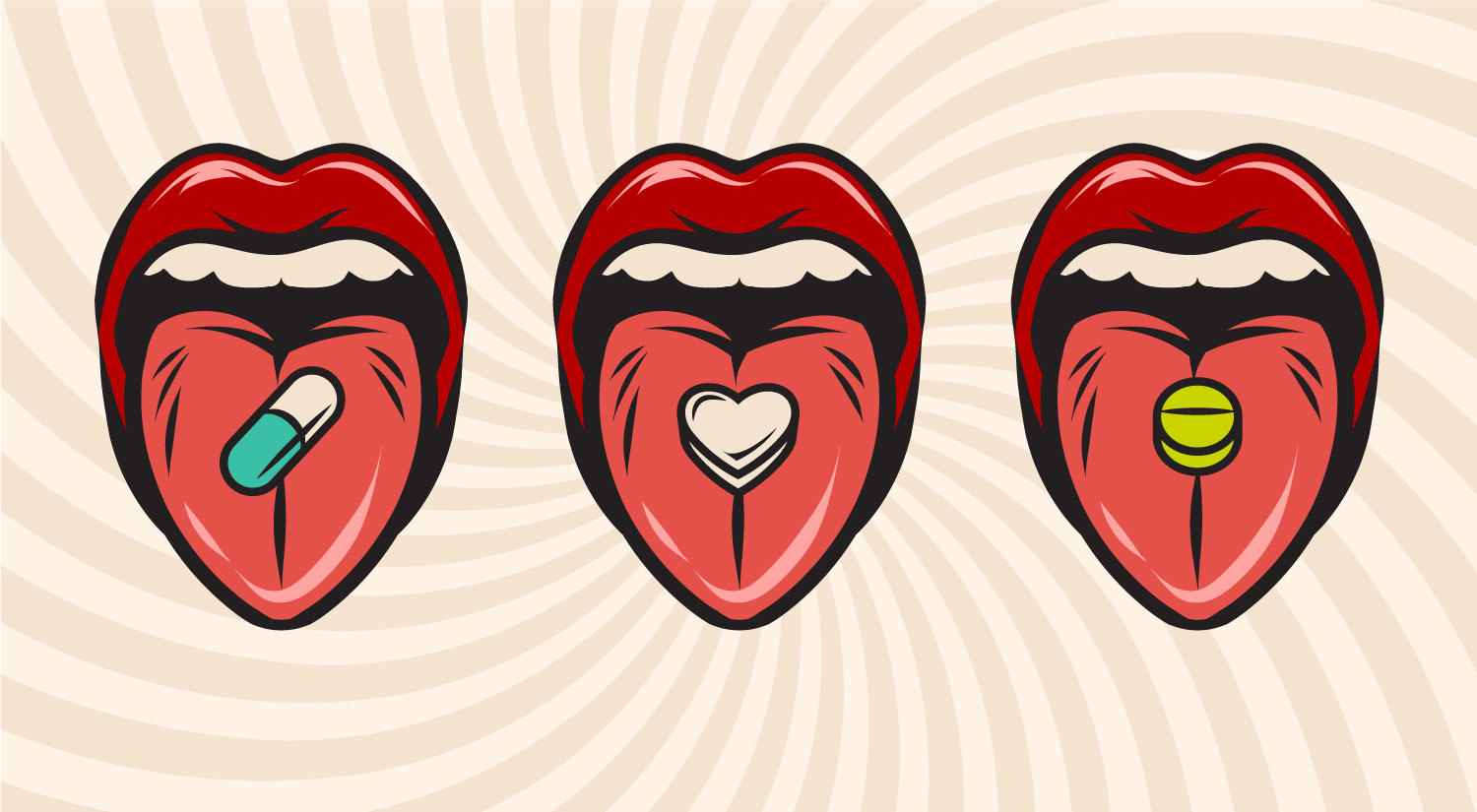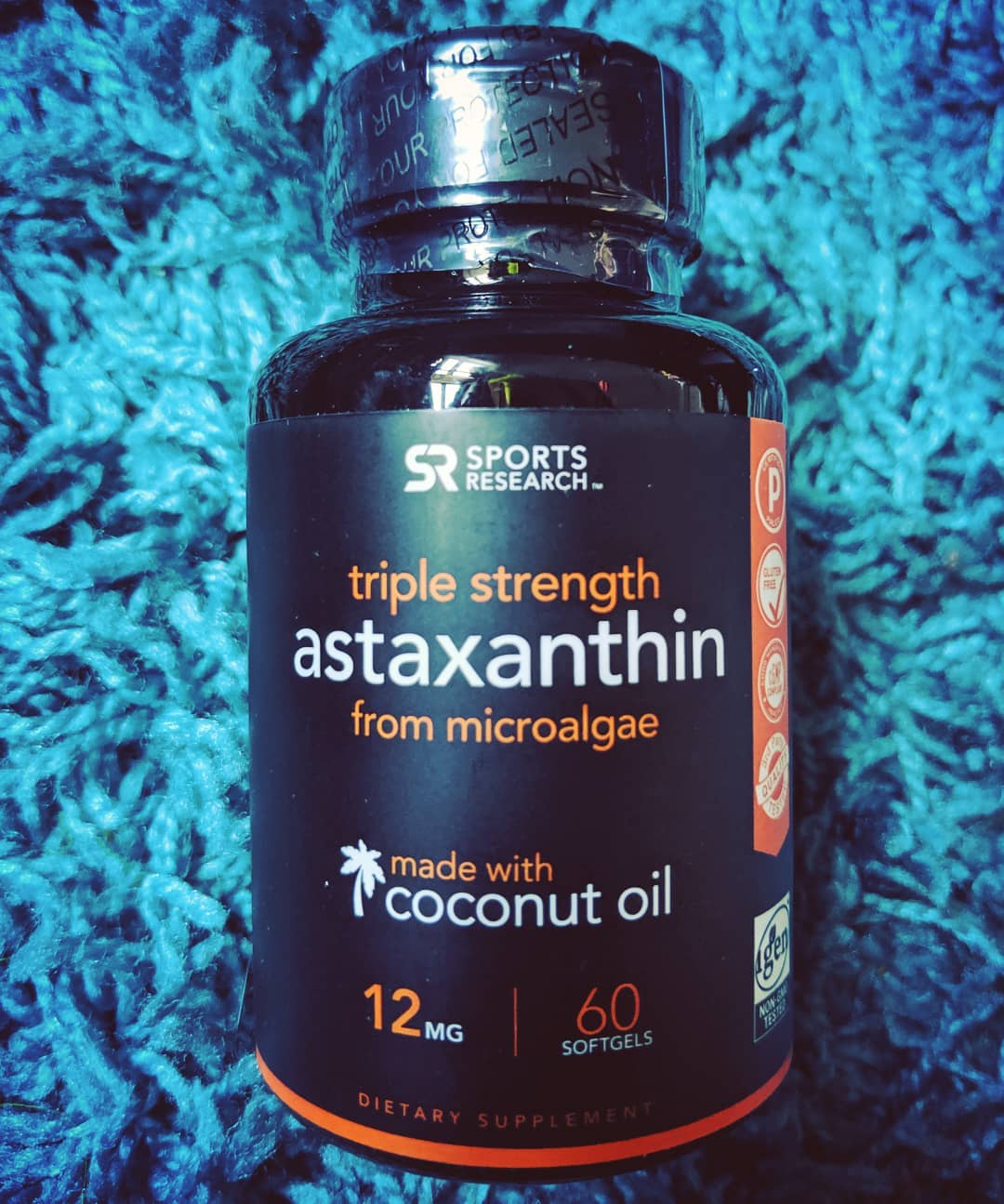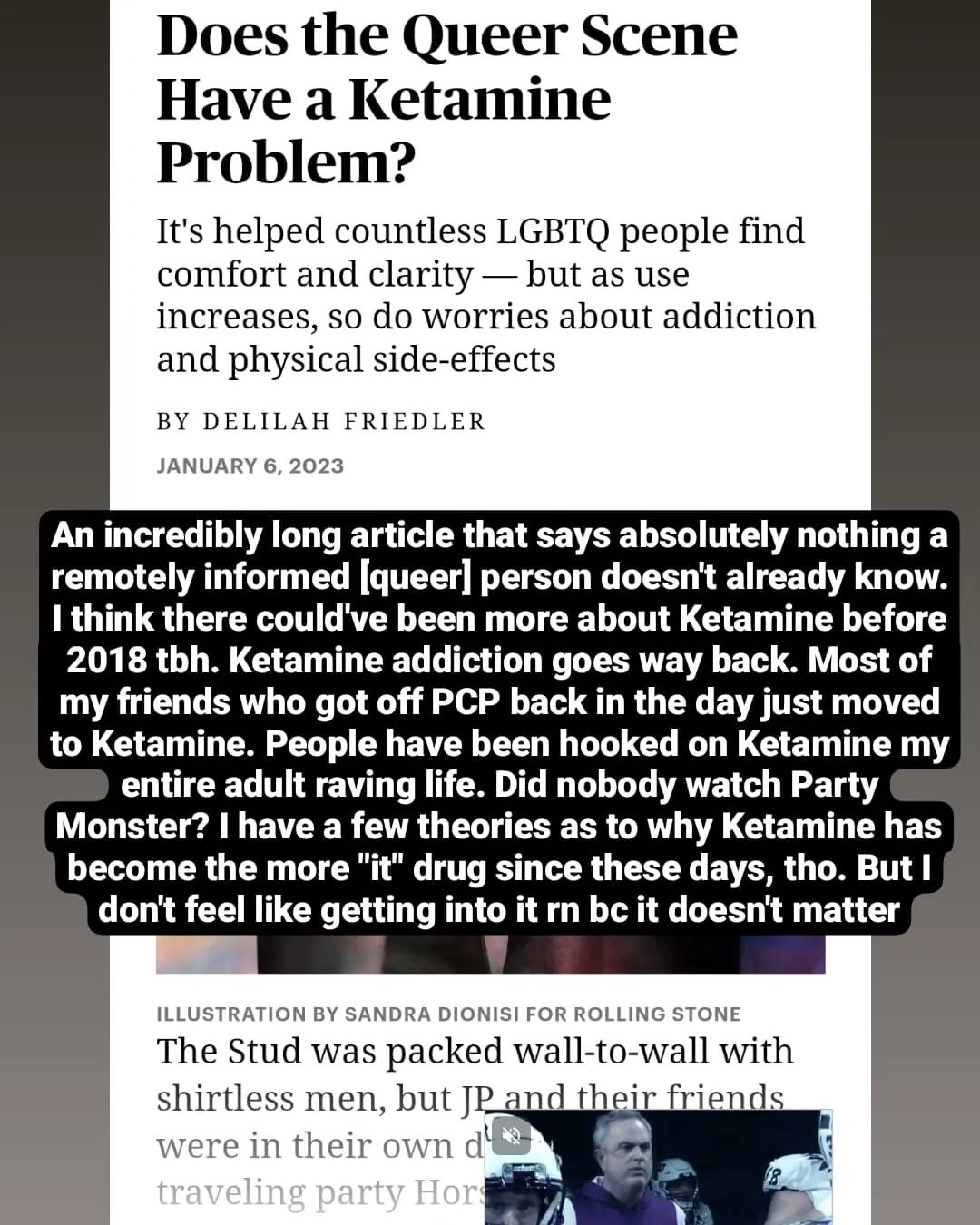
Does the Queer Scene Have a Ketamine Problem? I Say No. Here’s Why
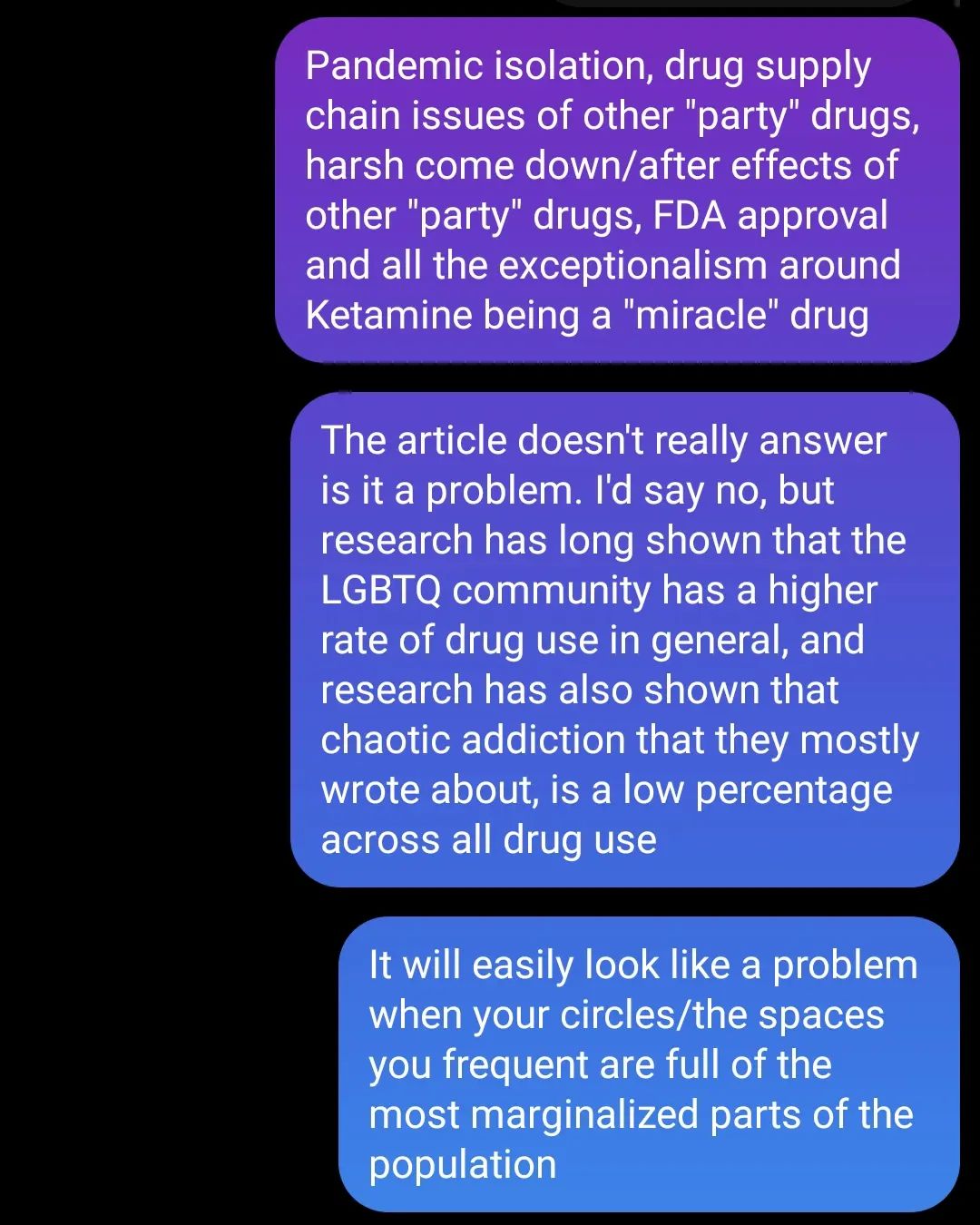

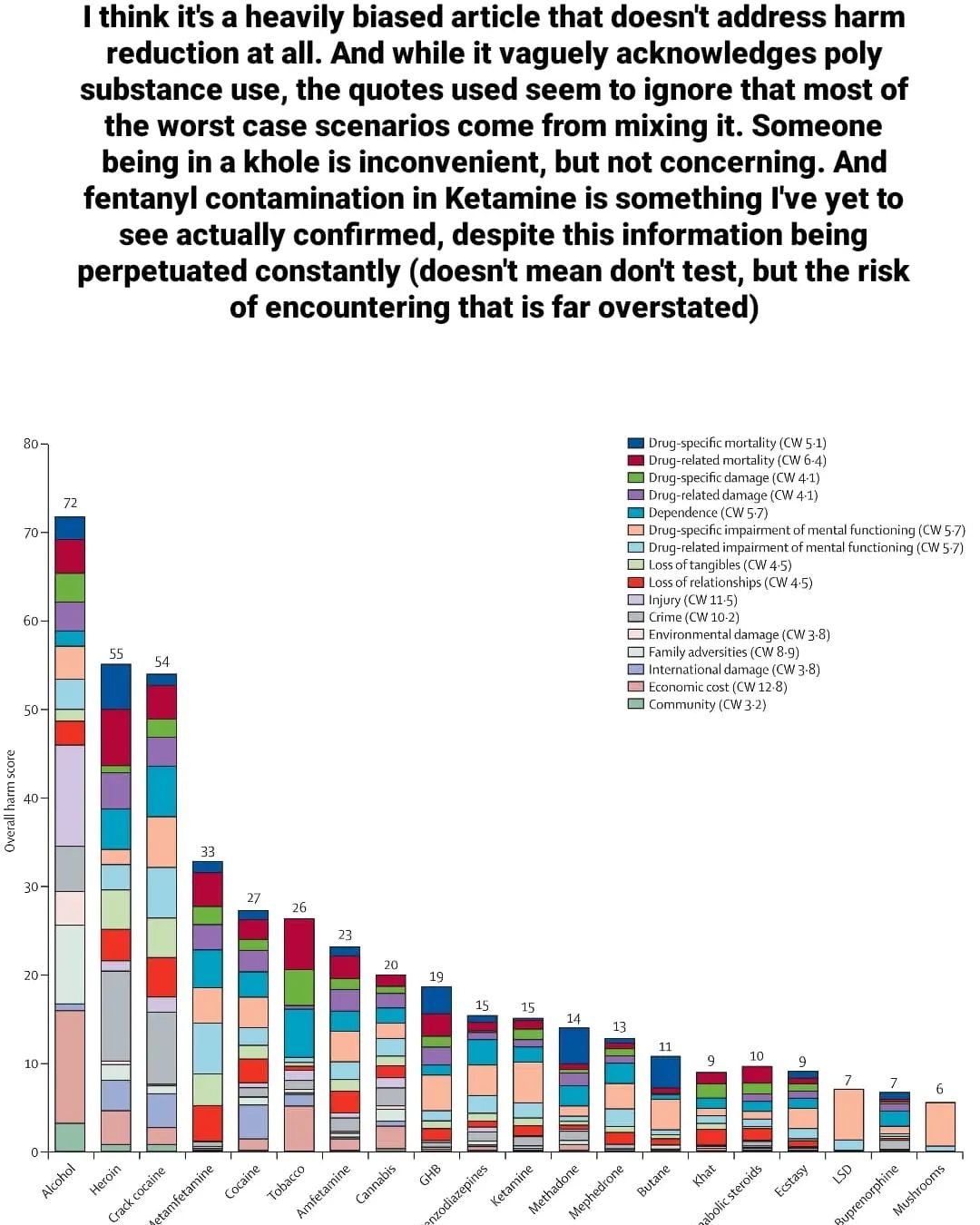
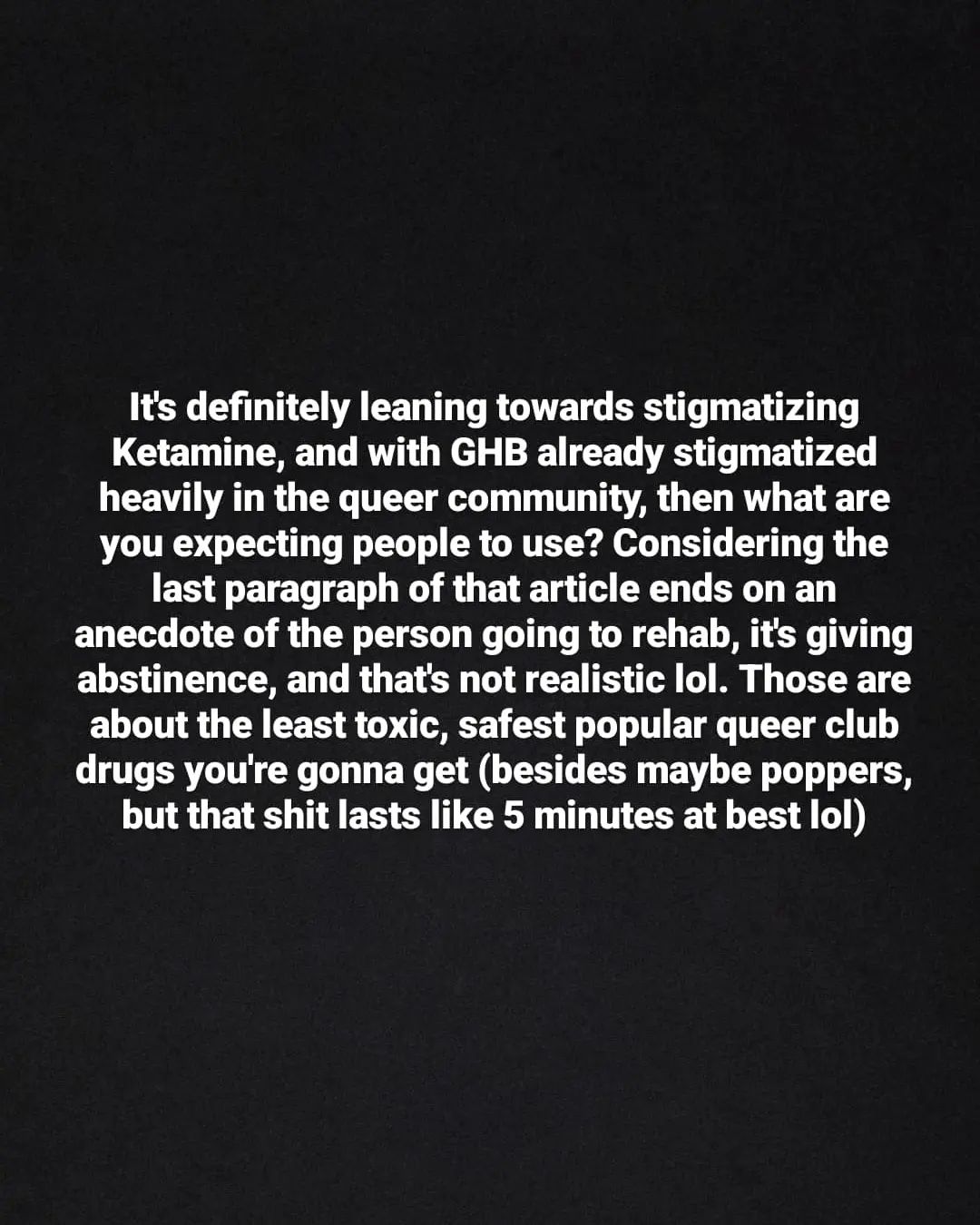

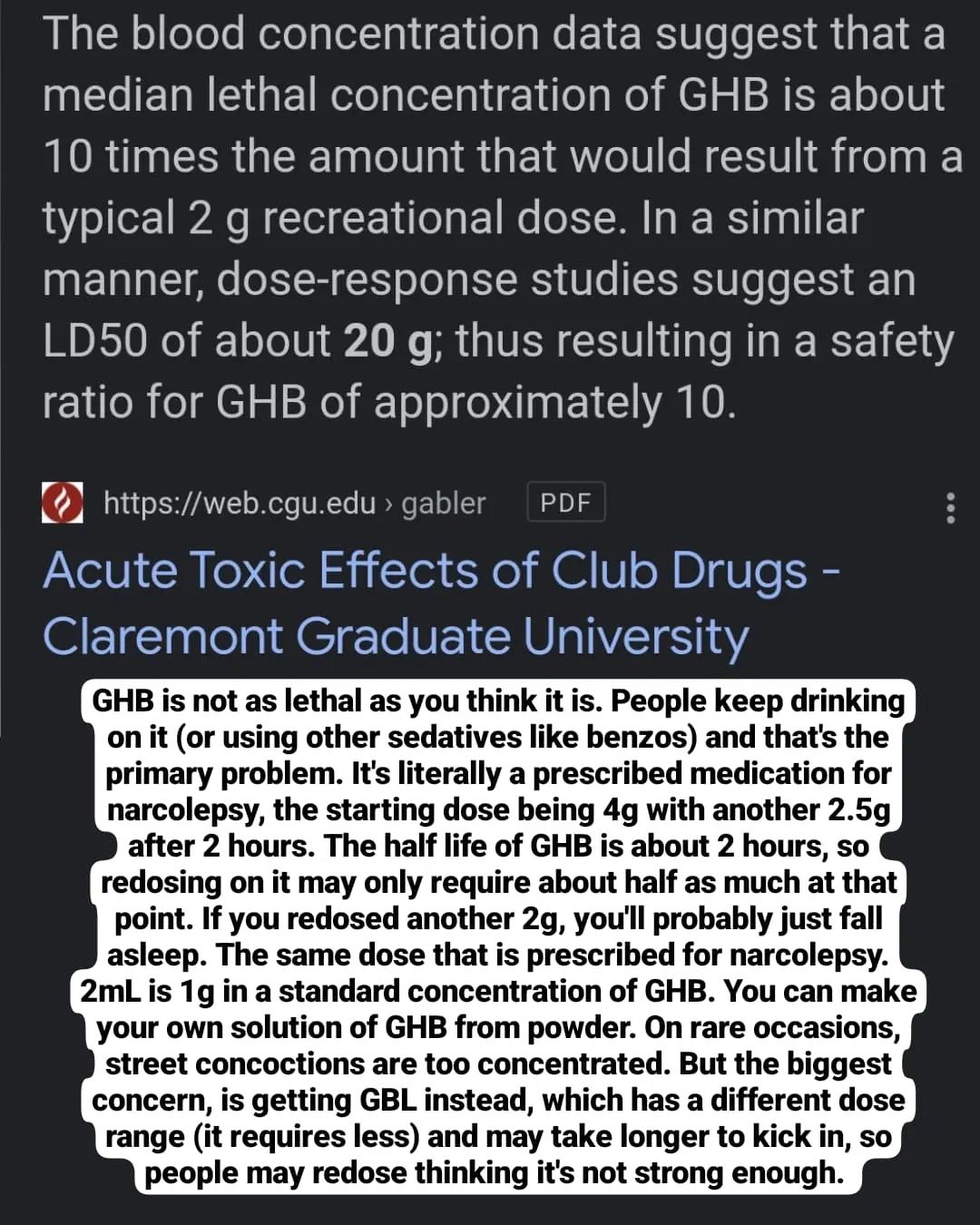


This article was published to Rolling Stones recently. If we’re basing our perceptions of drug addictions around what we see or hear the most, that will often look like the worst case scenarios, because that’s what’s most sensationalized for the media to portray, and for us to observe.
Someone who’s not chaotically using drugs looks like a lot of people we know/see. We may know they use these substances, but they’re not always the ones holed out in a corner of parties or losing their job from addiction that took over their lives.
Bladder or liver damage are concerns with frequent/excessive Ketamine use. These cases are less common and less relevant when defining whether or not it’s a “problem” for the community, since most use is not that severe. While I don’t think the medical guidelines for some disorders/complications are always accurate, I do want to acknowledge that addiction according to the DSM V, addiction/severe substance use disorder is classified by having at least 7 or more of the 11 criteria, and SUD exists on a spectrum.
What we’re seeing in the queer community with a drug like Ketamine is NOT an excess of addiction. We’re seeing the same patterns we’ve seen with most drugs used in this context which is a result of no regulation and misinformation and stigma. Of course, any time I bring up GHB being a fairly safe substance to consume, people clutch their pearls bc it’s associated with date rape or overdose (mostly from mixing w/ alcohol or benzos), when it’s a medication safely used for narcolepsy (up to 9g a night).
Using less toxic/addictive substances IS harm reduction. Years ago, more people used PCP here. It’s more potent and has higher risks. Transitioning to Ketamine use was more sustainable. Ppl are going to use drugs, and we, especially as a heavily marginalized group of ppl, should not be perpetuating the same mindsets that have criminalized and stigmatized drug use to the point it’s become far more unsafe and chaotic than it has to be–especially when the recovery industrial complex and access to adequate healthcare is trash.
Address root issues and focus on harm reduction, not exaggerating harms, when data suggests otherwise.
Additional thoughts in response to comments:
Is Ketamine harmful for the queer scene? Short answer: No. In comparison to the choice drugs of yesteryear, I think it’s one of the least harmful things people are using to detach from/cope with the harsh reality (in the context of nightlife spaces). People are doing the best with the resources that they have. We know that a lot of drug use, especially addiction, stems from trauma and lack of support. As an under-resourced, heavily criminalized and marginalized community, we should focus energy towards solving root issues and people will be able to choose different paths. I would like to see more of that, and less focus on what people are ingesting that gives them any will to keep living.
(To clarify) I think Ketamine has been harmful on the queer scene (that is different from it being a “problem), and young people’s lives in general. Unfettered drug use causes harm. What articles or mindsets like this lead to pushing abstinence, which is not harm reduction. Scapegoating the drug (or drugs in general) perpetuates the same cycles, and we really need to go deeper than that.
In the last 3 years, this scene has also heavily stigmatized GHB. The scene heavily stigmatizes people living with HIV as well. The patterns I’m observing is, instead of being able to commit to abstinence or a healthier relationship with substances, is they just keep switching which substances they use. The point is, the response shouldn’t simply be trying to eliminate drug use from people’s lives, especially not with fear, shaming, or guilt.
There can be conversations and actions around healthy coping mechanisms for the people who are interested in pursuing that. There’s nothing wrong with that and I encourage more spaces where people can partake in such activities or conversations. What I take issue with/combat, is people who may use a philosophy like harm reduction, but then actually push an abstinence only agenda. (I don’t think the author is claiming harm reduction, but I think it is sensationalizing and stigmatizing Ketamine more than analyzing more of the root of the issue or even offering harm reduction strategies for people who use Ketamine.)
I recommend checking out this short documentary on YouTube: America’s First Supervised Drug Consumption Site: OnPoint NYC by Invisible People. While the drugs shown look different, the message is all the same, and those are the principles I do my best to live by. It doesn’t matter that I have recovered from impulsive and compulsive use of any drug. Not everyone’s journey looks the same.
I also recommend checking out Carl Hart’s TED Talk on YouTube: Let’s Quit Abusing Drug Users

